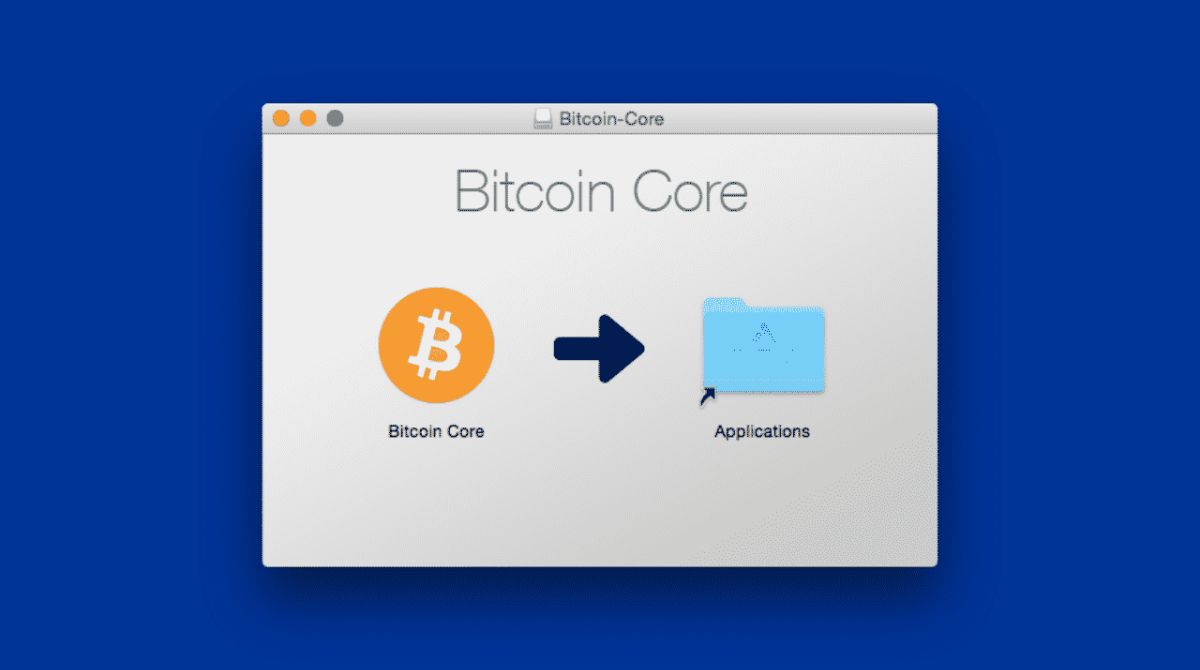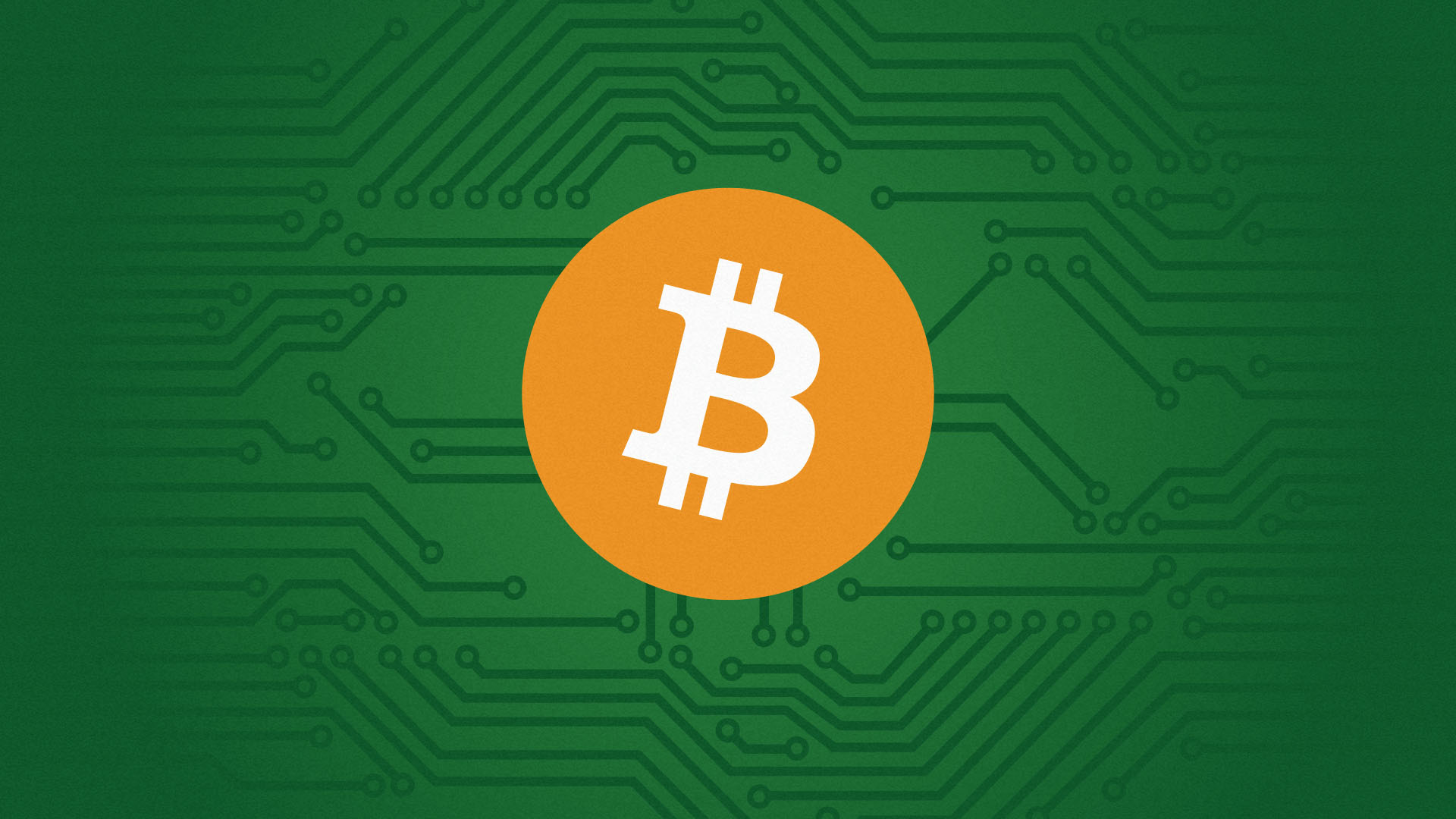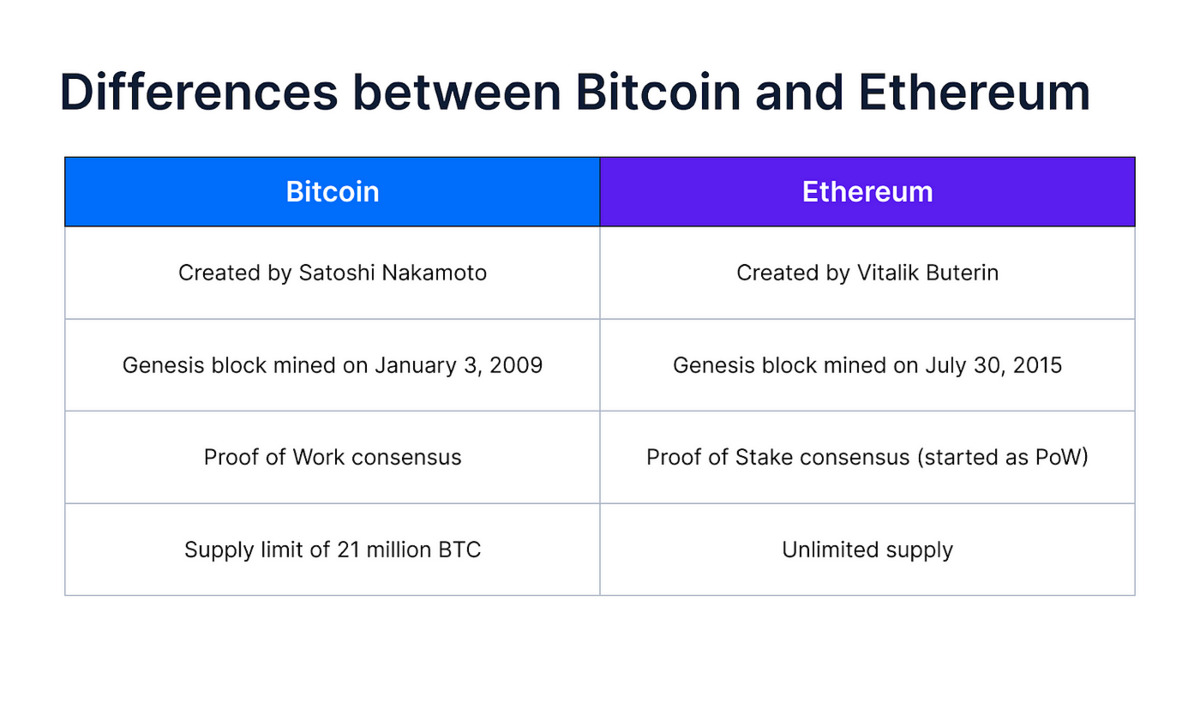Introduction
Bitcoin Core is the official software client of the Bitcoin network. It is an open-source project that serves as a full node implementation for the Bitcoin cryptocurrency. Bitcoin Core is designed to provide a secure, decentralized, and trustless way to transact and store wealth in the digital world.
Since its inception in 2009, Bitcoin has gained significant popularity and recognition as the first decentralized digital currency. However, managing and transacting with Bitcoin requires specialized software. Bitcoin Core emerged as the go-to choice for Bitcoin enthusiasts, developers, and those who want to have full control over their Bitcoin transactions.
Bitcoin Core is not just a wallet or an exchange. It is a powerful software that enables users to participate in the Bitcoin network as a node, validating and relaying transactions while contributing to the overall security and decentralization of the network. Whether you are a casual user or a developer, Bitcoin Core offers a robust set of features and functionalities to enhance your Bitcoin experience.
What is Bitcoin Core
Bitcoin Core is an open-source software client that enables users to interact with the Bitcoin network. It serves as a reference implementation of the Bitcoin protocol, allowing users to send, receive, and store Bitcoin securely. Bitcoin Core functions as a full node, meaning it participates in the decentralized peer-to-peer network, verifying and relaying transactions.
At its core, Bitcoin Core is a digital wallet that allows users to manage their Bitcoin holdings. It generates and stores private keys, which are essential to sign transactions and prove ownership of Bitcoin. The software provides a user-friendly interface that allows users to view their balance, transaction history, and manage their addresses conveniently.
In addition to being a wallet, Bitcoin Core also includes other essential components. It acts as a network node, helping to maintain the integrity and security of the Bitcoin network. This means that Bitcoin Core users contribute to making the network more robust and decentralized by verifying transactions and blocks. By running Bitcoin Core, users can independently validate the entire blockchain history and ensure the authenticity of transactions they receive.
Bitcoin Core also includes a built-in scripting language that allows developers to write smart contracts and create more complex transactions. It supports advanced features like multi-signature transactions, which require multiple signatures to authorize a transaction, adding an extra layer of security.
Furthermore, Bitcoin Core provides access to the Bitcoin network’s raw blockchain data. Users can access detailed information about blocks, transactions, and addresses through the software’s command-line interface. This functionality is particularly useful for developers and researchers who need to analyze the blockchain’s data structure and extract meaningful insights.
Overall, Bitcoin Core is a comprehensive software client that offers a wide range of functionalities beyond a basic digital wallet. Its full node capabilities make it an essential tool for those who want to actively participate in the Bitcoin network, contribute to its security, and have full control over their transactions and funds.
Why is it called Bitcoin Core?
The name “Bitcoin Core” may seem somewhat cryptic at first, but it has a specific meaning within the Bitcoin community. To understand why it is called Bitcoin Core, we need to delve into the history and evolution of the Bitcoin software.
In the early days of Bitcoin, the software that served as the reference implementation was simply referred to as “Bitcoin.” However, as the popularity of Bitcoin grew and the demand for various software implementations increased, it became necessary to differentiate between different versions of the software.
This led to the development of alternative implementations, such as Bitcoin XT, Bitcoin Unlimited, and Bitcoin Classic, which aimed to introduce different features or address specific scalability concerns. These implementations often had different consensus rules, leading to a split in the Bitcoin community and the creation of alternative blockchains, such as Bitcoin Cash.
To distinguish the original, consensus-driven implementation of Bitcoin from these alternative versions, the term “Bitcoin Core” was adopted. Bitcoin Core represents the software that adheres to the original Bitcoin protocol and consensus rules established by its creator, Satoshi Nakamoto.
The use of the word “Core” in the name signifies the central, foundational nature of this software. Bitcoin Core is considered the backbone of the Bitcoin network, providing the core functionality and maintaining the integrity of the blockchain. It is the software that powers the decentralized network and ensures the security and reliability of Bitcoin transactions.
Calling it “Bitcoin Core” also helps differentiate it from other Bitcoin-related projects, such as wallets, exchanges, or services built on top of the Bitcoin protocol. It serves as the essential building block for developers and enthusiasts who want to interact directly with the Bitcoin network and have complete control over their Bitcoin transactions.
In summary, Bitcoin Core is called so to distinguish it from alternative implementations of the Bitcoin software. It represents the original, consensus-driven implementation that forms the core of the Bitcoin network and ensures the smooth operation of the decentralized digital currency.
Features of Bitcoin Core
Bitcoin Core offers a plethora of features that make it a powerful and versatile software client for interacting with the Bitcoin network. Whether you’re a casual user or a developer, these features enhance your Bitcoin experience and provide you with more control over your funds. Let’s explore some of the notable features of Bitcoin Core:
- Full Node Functionality: Bitcoin Core allows users to run a full node, meaning they participate in the peer-to-peer network, validate transactions, and contribute to the security and decentralization of the Bitcoin network.
- Advanced Wallet Functionality: Apart from being a secure digital wallet, Bitcoin Core supports features like multi-signature transactions, allowing multiple signatures to authorize a transaction and enhance security.
- Direct Peer-to-Peer Transactions: Bitcoin Core enables users to send and receive Bitcoin directly to and from other users on the network, without relying on intermediaries like exchanges or payment processors.
- Scripting Language: Bitcoin Core includes a built-in scripting language that allows developers to create custom transactions and smart contracts. This flexibility opens up possibilities for creating innovative applications on top of the Bitcoin protocol.
- Privacy Features: Bitcoin Core offers various privacy-enhancing features, such as coin control, which allows users to select specific coins for transactions, and the ability to connect through the Tor network for increased anonymity.
- Access to Raw Blockchain Data: Bitcoin Core provides users with access to the full depth of the Bitcoin blockchain, allowing them to explore and analyze detailed information about blocks, transactions, and addresses.
- Consensus-driven Updates: Bitcoin Core follows a rigorous, community-driven process for implementing updates and improvements. This ensures that proposed changes are thoroughly evaluated and approved by the Bitcoin community before being implemented in the software.
- Compatibility with Multiple Operating Systems: Bitcoin Core is available for Windows, macOS, and Linux, making it accessible to users across different platforms.
These are just a few of the many features that Bitcoin Core offers. Whether you’re a beginner looking for a reliable Bitcoin wallet or a developer seeking to build on top of the Bitcoin protocol, Bitcoin Core provides a robust set of tools and functionalities to cater to your needs.
How does Bitcoin Core work?
Bitcoin Core operates as a software client that interacts with the Bitcoin network, allowing users to participate in the decentralized peer-to-peer network and manage their Bitcoin transactions. Understanding how Bitcoin Core works involves exploring its key components and the underlying processes that enable the functionality of the software.
At its core, Bitcoin Core functions as a full node implementation of the Bitcoin protocol. This means that it maintains a complete copy of the blockchain, which is a chronological record of all Bitcoin transactions. By having a local copy of the blockchain, Bitcoin Core users can independently validate and verify every transaction that occurs on the network.
When a user sends a Bitcoin transaction, it is propagated through the peer-to-peer network and eventually reaches the Bitcoin Core nodes. These nodes validate the transaction by checking if the sender has sufficient funds and if the transaction adheres to the consensus rules of the Bitcoin protocol. If the transaction is valid, it is included in a candidate block.
Bitcoin Core nodes are also responsible for mining new blocks. Mining involves solving complex mathematical puzzles to find a nonce (a random number) that, when combined with the other data in the block, creates a hash that meets certain criteria. Miners compete to find the correct nonce, and the first miner to do so successfully adds the new block to the blockchain, earning a reward in the form of newly minted bitcoins.
Once a new block is added to the blockchain, Bitcoin Core nodes propagate it to other nodes in the network, ensuring a synchronized and consistent view of the blockchain across all participants. Every Bitcoin Core node independently validates and verifies the new block, ensuring its integrity and consistency.
In addition to maintaining the blockchain, Bitcoin Core also provides users with a secure digital wallet. The wallet generates and stores private keys, which are required to sign transactions and prove ownership of Bitcoin. The wallet also retrieves the user’s transaction history and displays their current balance, allowing them to track their funds and manage addresses conveniently.
Bitcoin Core also includes a scripting language that allows developers to create custom transactions and smart contracts. This functionality enables the implementation of more complex use cases, such as multi-signature transactions, time-locked transactions, and atomic swaps.
Furthermore, Bitcoin Core supports the creation and management of multiple Bitcoin addresses, providing users with the ability to generate new addresses for enhanced privacy and security.
In summary, Bitcoin Core acts as a full node that maintains a complete copy of the blockchain, validates transactions, and contributes to the security and decentralization of the Bitcoin network. It also serves as a digital wallet, allowing users to send, receive, and manage their Bitcoin transactions securely. With its comprehensive set of features and robust functionality, Bitcoin Core empowers users to actively participate in the Bitcoin network and have full control over their funds.
Benefits of using Bitcoin Core
Bitcoin Core offers a range of benefits that make it an attractive choice for Bitcoin users. Whether you are a casual user or a developer, here are some of the advantages of using Bitcoin Core:
- Security: Bitcoin Core provides robust security features that help protect your Bitcoin holdings. As a full node, it validates transactions and blocks, ensuring you don’t fall victim to counterfeit or fraudulent transactions. By running your own node, you have more control over the security of your funds compared to relying on third-party services.
- Privacy: Bitcoin Core offers advanced privacy features, such as the ability to connect through the Tor network, which helps conceal your IP address and enhances your anonymity. Additionally, the coin control feature allows you to have more control over which specific coins you use for transactions, enhancing your privacy even further.
- Decentralization: By running Bitcoin Core as a full node, you actively contribute to the decentralization of the Bitcoin network. You help maintain the network’s security and integrity by independently validating and relaying transactions, ensuring that no single entity has total control over the network.
- Control: Bitcoin Core gives you full control over your Bitcoin transactions and funds. With your own wallet and private keys, you are not reliant on third-party services to store or manage your Bitcoin. You have the power to choose the level of security and privacy that suits your needs.
- Compatibility: Bitcoin Core is compatible with various operating systems, including Windows, macOS, and Linux. This allows users to access and use the software on their preferred devices, making it more accessible to a wider range of users.
- Cutting-edge Features: Bitcoin Core is regularly updated with new features and improvements. As an open-source project, it benefits from the contributions of a vibrant community of developers who continuously work on enhancing the software. By using Bitcoin Core, you stay up-to-date with the latest developments and have access to cutting-edge features.
These benefits make Bitcoin Core a compelling choice for Bitcoin users who value security, privacy, control, and decentralization. It empowers individuals to transact with Bitcoin in a secure and self-sovereign manner, keeping the principles of Bitcoin’s decentralized nature at the forefront.
Risks and Drawbacks of using Bitcoin Core
While Bitcoin Core offers numerous advantages, it’s important to be aware of potential risks and drawbacks associated with using the software. Understanding these challenges can help users make informed decisions and take necessary precautions. Here are some of the risks and drawbacks of using Bitcoin Core:
- Resource Requirements: Running Bitcoin Core as a full node requires significant computational resources and storage space. The blockchain’s size continues to grow, and maintaining a full copy of it can be demanding on your system’s resources, especially for users with limited hardware capabilities or slow internet connections.
- Initial Blockchain Download: When you first install Bitcoin Core, it needs to sync with the entire blockchain, which can take time and require a substantial amount of bandwidth. This initial download can be a barrier for new users or those with limited internet access.
- Technical Complexity: Bitcoin Core is a feature-rich software that may be intimidating for beginners or users who are not comfortable with technical aspects. The learning curve can be steep, and users need to be familiar with concepts such as private keys, addresses, and transaction fees to use the software proficiently.
- Responsibility: Being in control of your private keys also means taking full responsibility for their security. If you lose your private keys or they get compromised, you may lose access to your Bitcoin permanently. Users should have contingency plans in place, such as backing up private keys and implementing strong security practices.
- Network Connectivity: Bitcoin Core relies on a stable internet connection to communicate with other nodes and transfer data. If you experience connectivity issues or interruptions, it could affect the functionality and performance of the software.
- Software Updates: Keeping Bitcoin Core up to date with the latest releases and upgrades is crucial for security and compatibility. However, updating the software can sometimes involve complex procedures and may require users to stay informed about new releases and implement necessary updates promptly.
It’s important to note that these risks and drawbacks are inherent to the nature of Bitcoin itself and not specific to Bitcoin Core. Many of these challenges are a trade-off for the increased security, privacy, and control that Bitcoin Core provides. Users should carefully assess their individual needs and technical capabilities before deciding to use Bitcoin Core. It’s also advisable to seek guidance from reliable resources or community forums to address any concerns or questions.
How to download and install Bitcoin Core
Downloading and installing Bitcoin Core is a straightforward process that allows you to get started with utilizing the software to interact with the Bitcoin network. Here are the steps to download and install Bitcoin Core:
- Visit the Bitcoin Core website: Go to the official Bitcoin Core website at https://bitcoincore.org and navigate to the “Download” section.
- Select your operating system: Choose the appropriate version of Bitcoin Core for your operating system. Bitcoin Core is compatible with Windows, macOS, and Linux.
- Download the installation file: Click on the download link for your operating system to initiate the download. The file size may be substantial, so ensure you have enough storage space and a stable internet connection.
- Verify the file authenticity (recommended): Bitcoin Core developers recommend verifying the downloaded file’s authenticity using cryptographic hashes. Instructions for verifying the file can usually be found on the Bitcoin Core website.
- Run the installation file: Once the download is complete, locate the installation file and run it. Follow the on-screen prompts to begin the installation process.
- Choose the installation directory: During the installation, you will be prompted to select the destination directory where Bitcoin Core will be installed. You can choose the default location or specify a different directory.
- Complete the installation: After selecting the installation directory, the installation process will proceed. Follow any additional prompts or instructions provided by the installation wizard to complete the installation.
- Run Bitcoin Core: Once the installation is complete, you can launch Bitcoin Core by finding the installed application and running it. The software will start synchronizing with the Bitcoin network, downloading and verifying the blockchain.
- Configure Bitcoin Core: Upon the first run, you may be asked to configure certain settings, such as the location to store the blockchain data or the number of connections to other nodes. You can choose the default settings or modify them as per your preferences.
That’s it! You have successfully downloaded and installed Bitcoin Core on your computer. Now, you can explore the software’s features, set up your Bitcoin wallet, and begin using Bitcoin to send, receive, and store your funds securely.
Remember to keep your software up to date by periodically checking for new releases and installing any updates that become available. Staying current with the latest version of Bitcoin Core ensures you have the most secure and reliable experience while interacting with the Bitcoin network.
How to use Bitcoin Core
Using Bitcoin Core involves familiarizing yourself with its user interface and understanding its various features and functionalities. Here is a step-by-step guide on how to use Bitcoin Core:
- Launch Bitcoin Core: Run the Bitcoin Core application on your computer. The software will start synchronizing with the Bitcoin network, downloading the blockchain and verifying transactions.
- Create a new wallet or restore an existing one: If you are using Bitcoin Core for the first time, you will be prompted to create a new wallet. Follow the on-screen instructions to generate a new wallet and backup your wallet’s seed phrase. If you already have a wallet with a seed phrase, you can choose to restore it instead.
- View your wallet’s balance: Once your wallet is set up, you can view your Bitcoin balance on the main screen of Bitcoin Core. This will display the total balance of all addresses in your wallet.
- Receive Bitcoin: To receive Bitcoin, click on the “Receive” tab in Bitcoin Core. Here, you will find a unique Bitcoin address associated with your wallet. Share this address with the sender to receive Bitcoin. You can also generate multiple addresses for enhanced privacy.
- Send Bitcoin: To send Bitcoin, click on the “Send” tab in Bitcoin Core. Enter the recipient’s Bitcoin address, specify the amount you want to send, and choose the transaction fee. You can also customize the fee based on your preference. Review the transaction details and click “Send” to initiate the transaction.
- Manage your addresses and transactions: Bitcoin Core allows you to manage multiple Bitcoin addresses. You can generate new addresses, label them for better organization, and view transaction history for each address. This helps track your funds and maintain a clear record of your transactions.
- Explore advanced features: Bitcoin Core offers advanced features like coin control and multi-signature transactions. Coin control allows you to selectively choose which specific coins to use for transactions, enhancing privacy. Multi-signature transactions require multiple signatures to authorize a transaction, adding an extra layer of security. Explore these features to further customize your Bitcoin experience.
- Stay up-to-date: Regularly check for updates to Bitcoin Core and upgrade to the latest version to ensure you have access to the latest features and security enhancements. Keeping the software updated is vital to maintaining a secure and reliable Bitcoin experience.
Remember to always practice good security measures when using Bitcoin Core. Keep your wallet file and seed phrase backed up in a secure location. Implement strong passwords and enable any additional security features offered by Bitcoin Core. Be cautious of phishing attempts or malware that may compromise your wallet or funds.
By following these steps and utilizing the various features of Bitcoin Core, you can confidently send, receive, and manage your Bitcoin securely and efficiently.
Conclusion
Bitcoin Core, as the official software client of the Bitcoin network, offers a comprehensive set of features and functionalities that empower users to interact with the Bitcoin network directly. It serves as a full node implementation, allowing users to validate transactions, participate in mining, and contribute to the security and decentralization of the network. Additionally, Bitcoin Core provides users with a secure digital wallet to store and manage their Bitcoin holdings.
Using Bitcoin Core offers numerous benefits, including enhanced security, privacy, control, and the ability to actively contribute to the Bitcoin network’s integrity. By running your own full node, you have complete control over your transactions and funds, free from reliance on third-party services. The software’s advanced features, such as multi-signature transactions and a built-in scripting language, further expand the possibilities for Bitcoin usage and development.
However, it is essential to be aware of the risks and drawbacks associated with using Bitcoin Core. These include technical complexity, resource requirements, and the need for a stable internet connection. Users must take full responsibility for the security of their private keys and ensure they stay informed about updates and security best practices.
To download and install Bitcoin Core, visit the official website and follow the provided instructions. Once installed, users can explore the user-friendly interface and utilize features like sending and receiving Bitcoin, managing addresses, and accessing advanced functionalities.
In conclusion, Bitcoin Core is a powerful software client that enables individuals to engage with the Bitcoin network in a secure, decentralized, and self-sovereign manner. Its array of features and contributions to network security make it a valuable tool for both Bitcoin enthusiasts and developers. By using Bitcoin Core, users can actively participate in the Bitcoin revolution and have full control over their financial sovereignty.

























